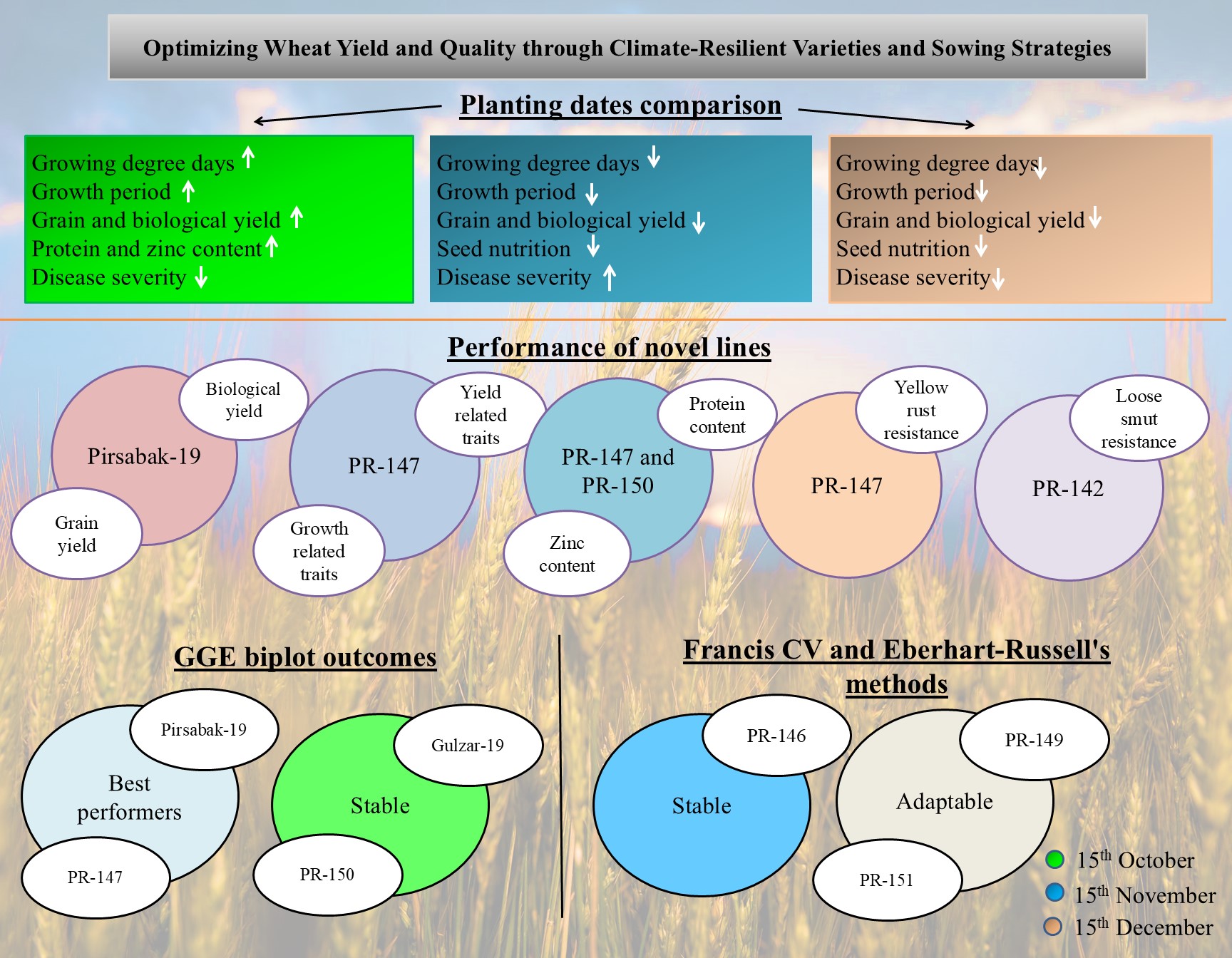
Suboptimal planting dates and disease susceptibility threaten wheat yield and quality, impacting food security, especially particularly amid in the context of climate change. field Field experiments were conducted at the Cereal Crop Research Institute (CCRI) Pirsabak, Pakistan; , during the winters of 2021-22 and 2022-23 to evaluate the performance of 11 wheat lines/varieties (PR142, PR-146, PR-147, PR-148, PR-149, PR-150, PR151, PR-152, Khaista-17, Gulzar-19, and PS-19) across different planting dates (15th October, 15th November, and 15th December) using a Randomized Complete Block Design (RCBD) with a split-plot arrangement and three replications. Delayed planting reduced the number of growing degree days (GDD), negatively affecting phenology, yield, and quality. October 15th planting led to a 113.5% increase in grain yield and 80.4% increase in biological yield over compared to December planting. PR-147 and Pirsabak-19 yielded the highest (3875 kg ha⁻¹ and 10791 kg ha⁻¹, respectively), while whereas PR-150 had the highest zinc content. Early planting improved protein (12.18%) and zinc (31.27 mg kg⁻¹) contents (31.27 mg kg⁻¹). GGE biplot analysis identified PR-147 and Pirsabak-19 as topas top performers. Yellow rust and loose smut incidences were lower in with December planting than with November planting. Early planting and resilient varieties are key for to enhancing wheat productivity and quality under climate change.
Total file downloads: 19